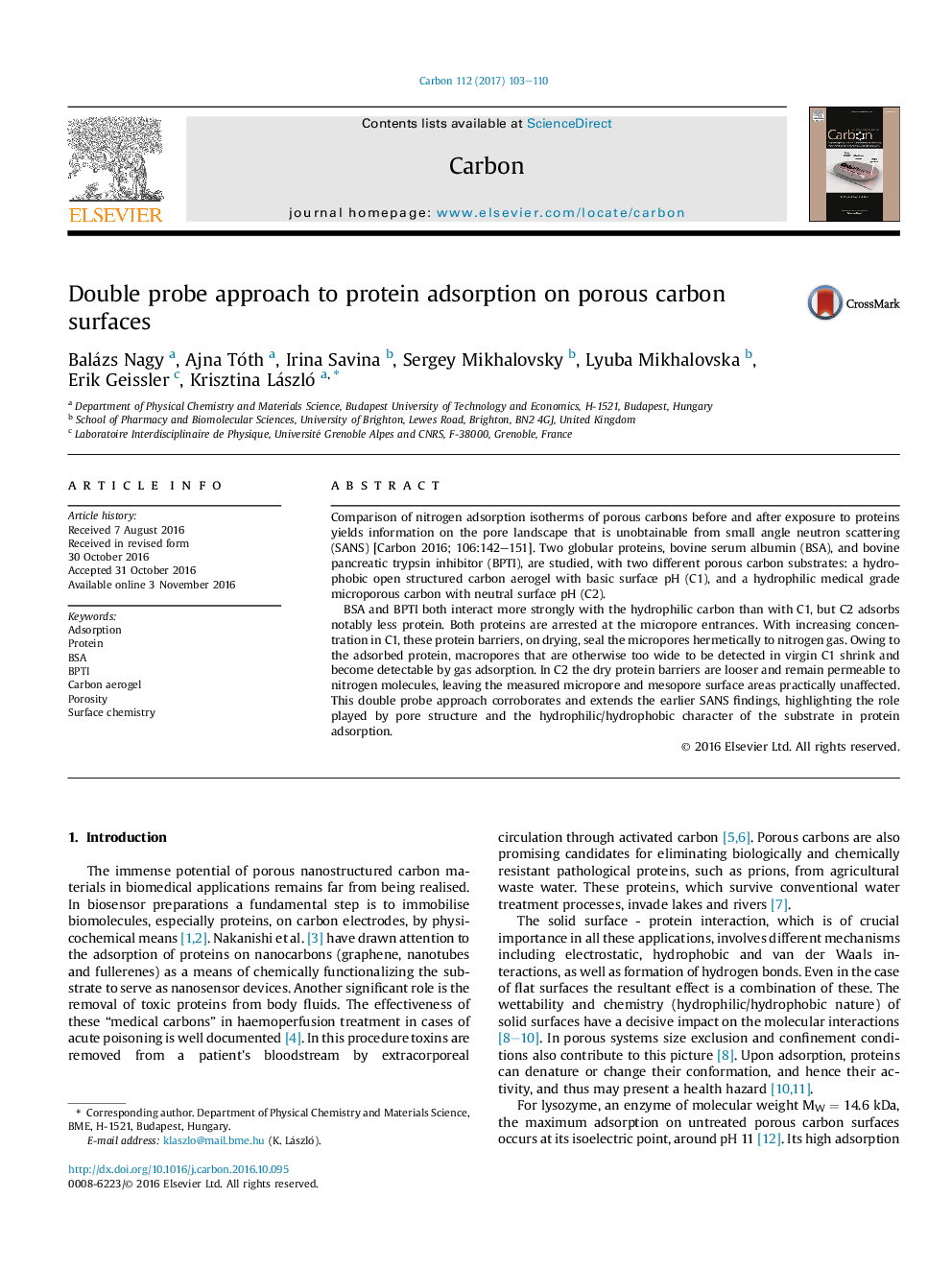| Article ID | Journal | Published Year | Pages | File Type |
|---|---|---|---|---|
| 5432464 | Carbon | 2017 | 8 Pages |
Comparison of nitrogen adsorption isotherms of porous carbons before and after exposure to proteins yields information on the pore landscape that is unobtainable from small angle neutron scattering (SANS) [Carbon 2016; 106:142-151]. Two globular proteins, bovine serum albumin (BSA), and bovine pancreatic trypsin inhibitor (BPTI), are studied, with two different porous carbon substrates: a hydrophobic open structured carbon aerogel with basic surface pH (C1), and a hydrophilic medical grade microporous carbon with neutral surface pH (C2).BSA and BPTI both interact more strongly with the hydrophilic carbon than with C1, but C2 adsorbs notably less protein. Both proteins are arrested at the micropore entrances. With increasing concentration in C1, these protein barriers, on drying, seal the micropores hermetically to nitrogen gas. Owing to the adsorbed protein, macropores that are otherwise too wide to be detected in virgin C1 shrink and become detectable by gas adsorption. In C2 the dry protein barriers are looser and remain permeable to nitrogen molecules, leaving the measured micropore and mesopore surface areas practically unaffected. This double probe approach corroborates and extends the earlier SANS findings, highlighting the role played by pore structure and the hydrophilic/hydrophobic character of the substrate in protein adsorption.
Graphical abstractDownload high-res image (207KB)Download full-size image
